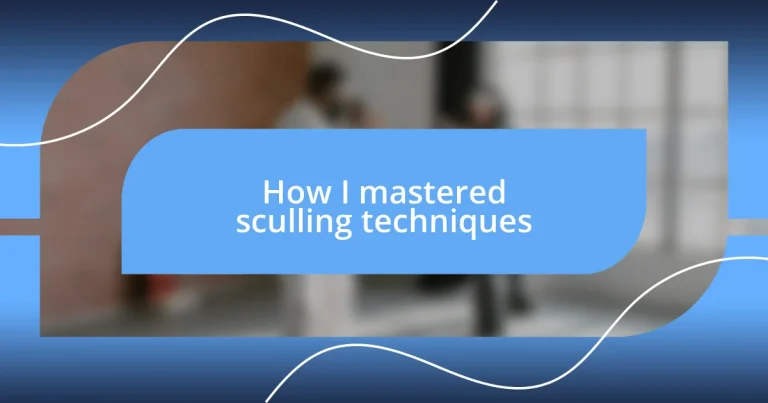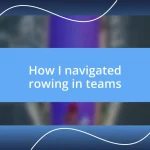Key takeaways:
- Effective sculling relies on proper grip, body positioning, and weight distribution for enhanced control and performance.
- Improving balance and rhythm through techniques like visualization, one-sided sculling, and drills can significantly elevate sculling skills.
- Advanced strategies such as high strokes, one-handed sculling, and mental visualization can enhance competitive performance and build confidence.
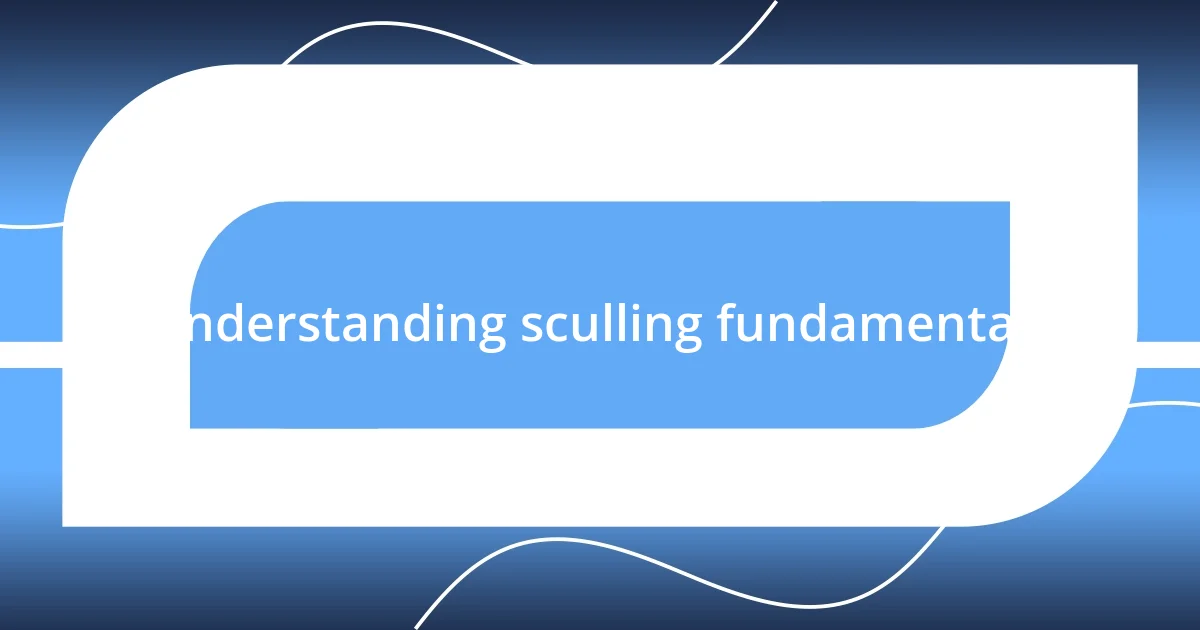
Understanding sculling fundamentals
At its core, sculling is about finesse and control, rather than sheer power. I remember the first time I tried sculling—it felt like trying to balance on a tightrope. I realized that the subtle movements of my hands and body were just as crucial as the paddle’s strokes. Have you ever noticed how tiny adjustments can dramatically change your balance?
Understanding weight distribution in the boat is fundamental for effective sculling. I once had a moment where I leaned too far to one side, and suddenly, I was tipping over! That experience taught me how important it is to stay centered. It’s fascinating to discover how just shifting your weight a little can lead to smoother, more controlled movements on the water.
Another key aspect is developing a rhythm with your strokes. In the beginning, I often felt out of sync, like I was dancing to the wrong beat. It took practice to find that flow, but when I did, I felt this incredible connection with the water. Have you ever experienced that magical moment when everything clicks? It’s these moments that make the journey of mastering sculling truly rewarding.
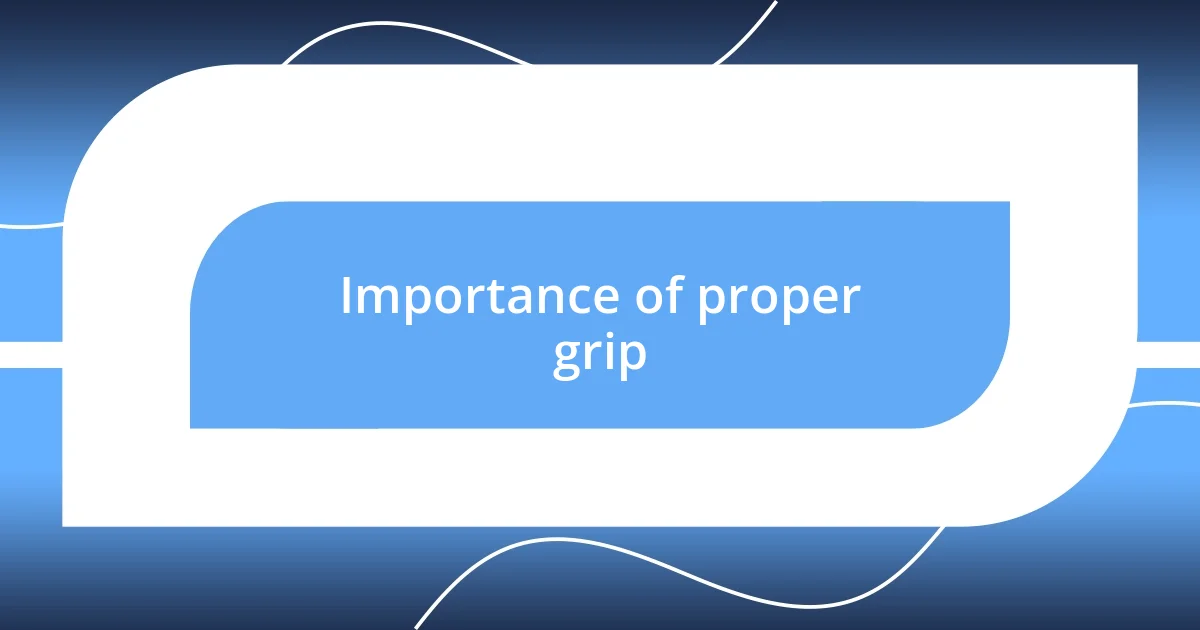
Importance of proper grip
The grip on your sculling oars is not just about holding on; it’s an essential foundation for maintaining control and precision. I vividly recall a day on the water when I realized my grip was too tight, causing my strokes to be rigid and unresponsive. As soon as I relaxed my hands, I felt the fluidity return, like the difference between clenching a sponge versus gently holding it. That moment was a real eye-opener for me regarding how a proper grip directly affects performance.
Here are some key reasons why a proper grip matters:
- Concentration of Force: A good grip allows for even distribution of effort, reducing fatigue and maximizing power output.
- Control: Enhanced grip control means better maneuverability, letting you adapt quickly to changing conditions on the water.
- Reduced Risk of Injury: Straining your hands or wrists from improper grip can lead to injuries, which can sideline you for weeks.
- Connection with the Oar: Feeling the oar’s displacement through a proper grip can improve your sensitivity to water resistance, enabling more effective strokes.
- Consistent Technique: Developing a signature grip helps reinforce muscle memory, making your movements more automatic over time.
I’ve learned that taking a moment to focus on grip technique can transform a frustrating practice session into an eye-opening experience. Mastering this small yet significant detail truly elevates one’s sculling journey.
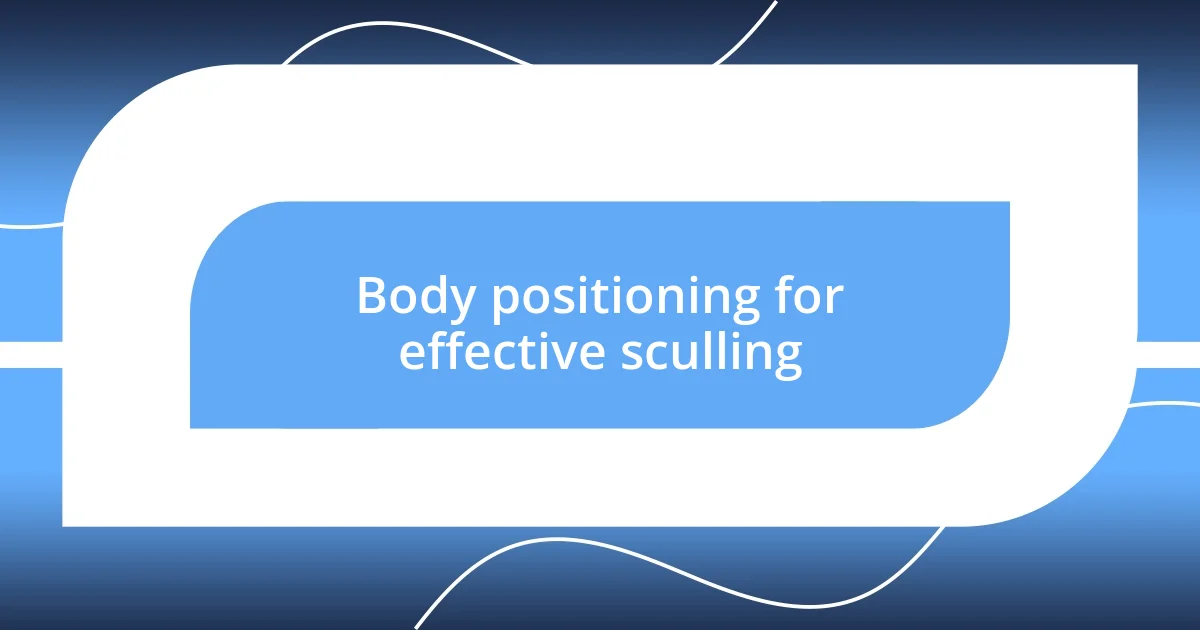
Body positioning for effective sculling
Body positioning is vital for effective sculling. I still recall my early days on the water, where I struggled to maintain balance. I was often told to keep my core engaged, but it wasn’t until I actually felt the difference that everything clicked. When my hips were aligned with the oars, it felt like I was an extension of the boat rather than just sitting in it. Have you ever noticed how a slight shift in positioning can elevate your performance?
Generating power efficiently depends on your body’s alignment with the oars. I found that having my feet shoulder-width apart gave me greater stability during each stroke. When I experimented with different stances, I felt more grounded and less wobbly. That feeling of security allowed me to focus on my strokes. It’s amazing how positioning can enhance not only strength but also confidence on the water.
The art of sculling requires a dynamic balance between tension and relaxation in your body. I learned the hard way that tightening up my shoulders would lead to fatigue. Instead, I now consciously relax my shoulders and allow my body to flow with each motion. When I maintain a relaxed posture, I improve my connection with the water, creating a more harmonious experience. Have you discovered that sweet spot where effort meets ease?
| Body Positioning Element | Importance |
|---|---|
| Foot Placement | Stability and power distribution |
| Core Engagement | Balance and support |
| Shoulder Relaxation | Prevents fatigue and promotes flow |
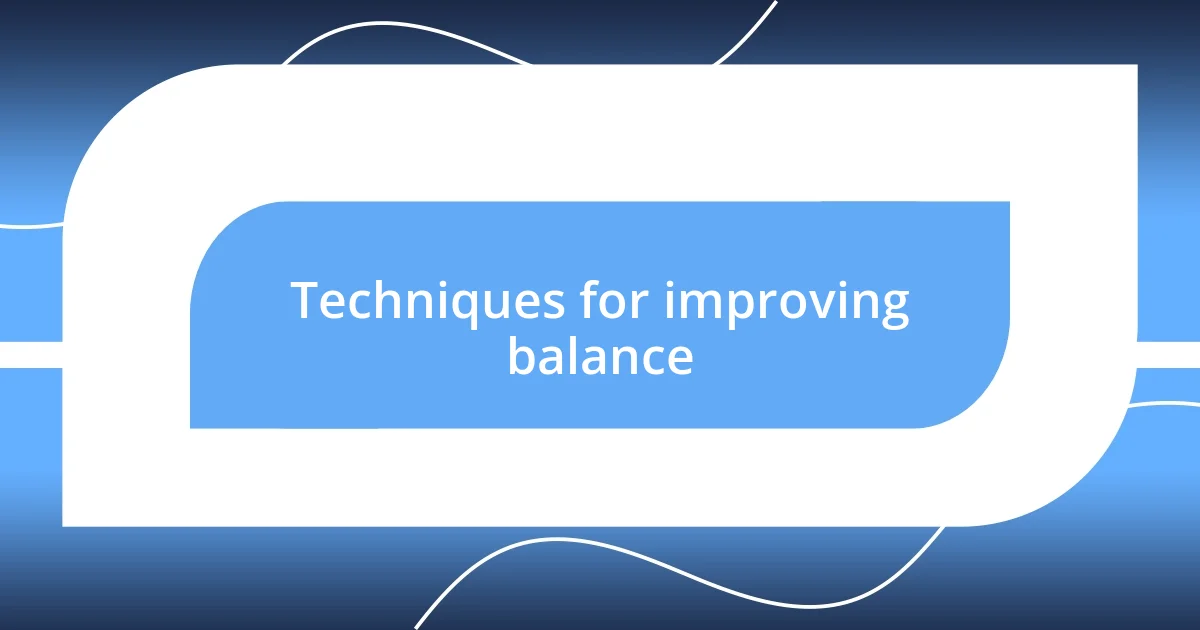
Techniques for improving balance
Improving balance in sculling has a lot to do with the rhythm of your strokes. I’ve often found that practicing near the shore, where I could catch my balance without the fear of deep water, helped me become more aware of my movements. Have you ever tried to focus solely on your breathing while sculling? It’s a game-changer! When I connect my breathing to each stroke, my body naturally finds its equilibrium, allowing me to glide much more smoothly across the water.
In my journey, I discovered the power of visualizing balance. One day, while sculling, I imagined a line running from my head down through my core and into the boat—essentially my center of gravity. Maintaining this mental image helped me feel more anchored. The more I focused on this imagery, the better my stability became, almost as if I was a tightrope walker finding my footing. Think about your own experiences: when have you noticed a moment of clarity in maintaining balance?
Another practical technique I’ve relied on is practicing one-sided sculling. By alternating my strokes using only one side, I developed a stronger sense of balance over time. At first, it felt awkward—like learning to ride a bike with one hand. Yet, after a few sessions, it became a fascinating challenge that really heightened my awareness of weight distribution and core engagement. It’s remarkable how stepping outside your comfort zone can reveal new layers of understanding. Have you ever pushed your limits in a way that surprised you?
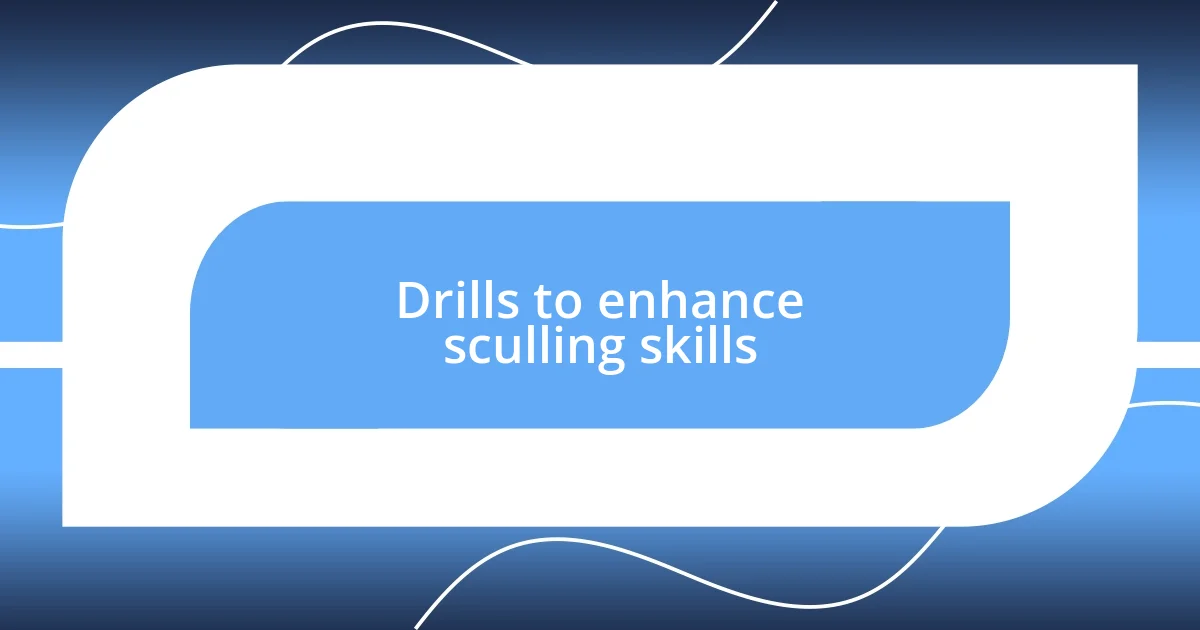
Drills to enhance sculling skills
One of the most effective drills I embraced to enhance my sculling skills is the “Scull and Pause” method. I would scull down the river, taking deliberate strokes and then stopping to assess my body positioning. This pause gave me a moment to feel how my core engaged and allowed me to correct any misalignments without losing my rhythm. Have you ever considered the power of stillness in motion? I found that those brief moments of reflection transformed my sculling and deepened my connection with every stroke.
Another drill that genuinely surprised me was the “Feather and Drive” exercise. I focused only on flicking my wrists to feather the oars during the recovery phase. Initially, it felt strange and uncoordinated, but after several rounds, I noticed a remarkable improvement in my fluidity. It felt like I was dancing on the water instead of forcing my strokes. Have you ever tried to isolate a specific movement? When you do, you often unlock a level of mastery you didn’t know you had!
Incorporating roll-ups into my practice significantly boosted my sculling abilities. Essentially, it’s about transitioning from rowing to spinning the boat and back to sculling smoothly. I’ll never forget the exhilaration the first time I executed it flawlessly; it was as if I had unlocked a secret passage to greater control. It’s incredible how exploring different techniques helps us grow. Have you ever found an unexpected joy in what seemed like an extra challenge? Embracing these moments can lead to real breakthroughs!
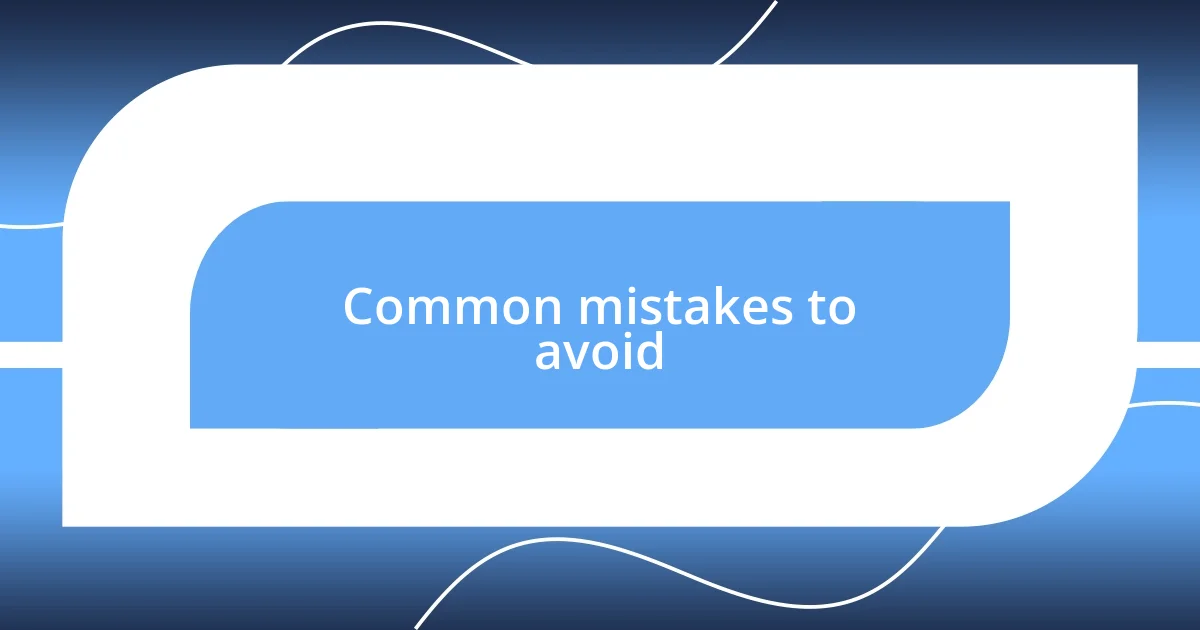
Common mistakes to avoid
It’s easy to underestimate the importance of grip while sculling, but I’ve learned the hard way that an improper hold can lead to a cascade of mistakes. In my early days, I often gripped the oar too tightly, thinking it would give me more control. Instead, it restricted my movements. I started to feel tension build up in my shoulders and wrists, which made sculling tiring and less enjoyable. Have you ever noticed how relaxation can enhance your performance?
Another blunder I frequently encountered was a lack of rhythm between my strokes and recovery. I remember a particularly frustrating practice where I felt like I was fighting the water rather than flowing with it. It took me a while to realize that I needed to synchronize my actions—allowing one to inform the other. Think about your own sculling practice; how often do you find yourself rushing into your next stroke? By slowing down to breathe and reset, you’ll unlock smoother transitions.
Finally, I can’t stress enough the impact of failing to engage the core. There were moments when I felt like I could power through with just my arms, but that was my ego talking. It wasn’t until I focused on my core that everything changed—I could feel the energy radiating from my abdomen, creating a more efficient stroke. I encourage you to reflect on your own approach: are you drawing power from your core or just your limbs? Understanding this connection can elevate your sculling experience significantly.
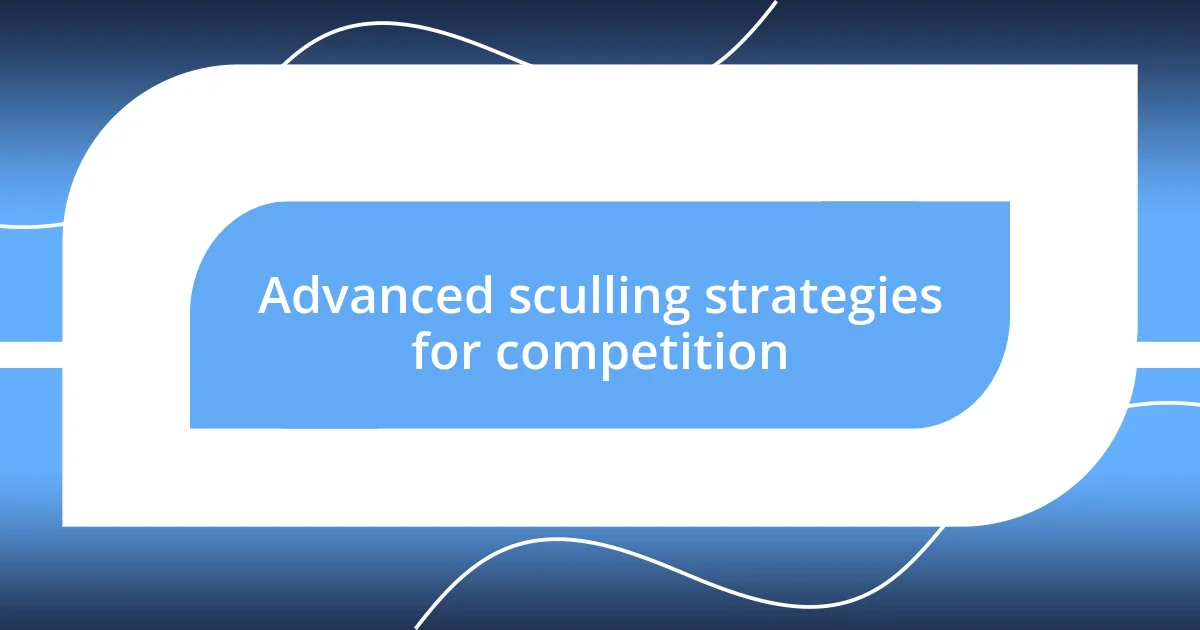
Advanced sculling strategies for competition
Advanced sculling techniques can truly make a difference in competitive settings. When I started focusing on “high strokes,” I felt an immediate impact. By emphasizing a higher hand position, I could generate more power while maintaining a quicker recovery. Have you ever felt that rush of speed when your movement aligns perfectly with your intention? It’s exhilarating how subtle adjustments can amplify your performance significantly.
Another strategy that worked wonders for me was implementing the “one-handed scull” practice. It felt quite strange at first—almost like learning to walk again—but it forced my body to hone in on balance and precision. I distinctly remember the first time I did it successfully; the feeling of control was unlike anything I’d experienced before. Have you considered the power of limiting your resources to improve your skills? This idea can be a game-changer in building both confidence and technique.
Finally, I’ve discovered that mental visualization plays an essential role in mastering sculling. I often close my eyes and vividly picture each part of my stroke, moving effortlessly through the water. During a particularly intense competition, this mental rehearsal helped ground me and mitigate pre-race jitters. Have you ever used visualization to prepare for a challenge? Tapping into that mental space can elevate not just your performance but also your mindset, making you more resilient when it matters most.












